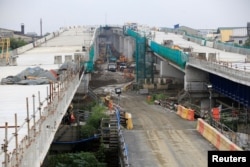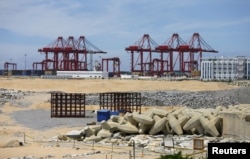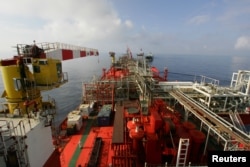A state visit by Chinese President Xi Jinping to the Philippines this month heralds more development aid and progress on joint undersea fuel exploration for a host country that’s in the midst of economic change.
The Chinese president will visit for the first time since the election of his Philippine counterpart Rodrigo Duterte, who surprised the West and much of his population after taking office in 2016 by improving ties with China. Beijing and Manila had bitterly contested sovereignty over parts of the South China Sea before then.
As the two sides normally avoid talking about the maritime dispute now, the leaders are expected to focus on how China can help the Philippines build railways, bridges and other infrastructure, analysts say. Those projects fall under Duterte’s five-year, $169 billion “Build, Build, Build” policy.
The two leaders could also announce progress as well on joint exploration for fuel under the South China Sea, some scholars believe.
“The two governments will be signing a lot of agreements, particularly in terms of infrastructure to support the ‘Build, Build, Build’ policy of the Philippine government and then other agreements like the possibility of joint exploration,” said Maria Ela Atienza, political science professor at University of the Philippines Diliman.
Money for new infrastructure
China pledged $24 billion in development aid and investment in 2016 when Duterte first traveled to Beijing. China had already spread its aid and investment around much of Asia, part of its Belt and Road initiative to open world trade routes by improving infrastructure.
Some Filipinos wonder how much of that pledge total China will eventually offer and whether the Philippines would go into debt the way Pakistan and Sri Lanka did after receiving Chinese loans.
“A lot has been promised so far, but the realization of some of those pledges in the past haven’t come to pass yet, so you have to see if there’s more to come,” said Christian de Guzman, vice president and senior credit officer with Moody’s in Singapore.
When Xi visits at an unannounced date after Nov. 18, he and Duterte will sign a $3.3 billion loan deal to help build a railway line southeast from Manila to the Bicol Peninsula, domestic media say. The project is part of Duterte’s $169 billion infrastructure renewal program set to run through 2022.
China is also expected to help fund a $606 million railway line on the largely impoverished but resource-rich island of Mindanao.
The Philippines is looking to new railways, airports and seaports to stimulate foreign investment. Investors like the country’s inexpensive labor and the English-language skills of workers, but often skip it because of utility and transport costs.
Oil and gas exploration
The two governments have been in talks much of this year on a deal for joint oil or gas exploration off the coast of the Philippine island Palawan. The Philippines hopes to develop undersea fuels and reduce dependency on increasingly costly imports, a driver of inflation since August.
Economists say the country needs foreign expertise and investment to extract fuel from under the seabed.
China hopes joint exploration will boost its image as a good neighbor in Asia, after alarming the Philippines and five other governments with years of military expansion in the contested sea, maritime scholars believe. Other countries sometimes turn to China’s rival the United States for support when worried about Chinese expansion.
The Philippine foreign secretary was quoted July 31 as saying that Beijing was willing to take just a 40 percent stake in any fossil fuel discoveries under a tract of the South China Sea where the two countries have competing sovereignty claims.
The two presidents will probably discuss exploration, including some kind of breakthrough on a deal, without touching on the sovereignty issue, said Ramon Casiple, executive director with the Philippine advocacy organization Institute for Political and Electoral Reform in Metro Manila.
“The particular topic I think will be more on securing the agreements and how to really cooperate with regard to the South China Sea and other areas,” Casiple said.
Some Filipinos want leaders to talk about the reported harassment of fishing boats by Chinese vessels in the disputed sea, Atienza said. But she said Duterte has a policy of avoiding the sovereignty dispute in his dealings with China.
Xi’s visit to the Philippines will be the eighth by a Chinese leader since the two sides established diplomatic relations in 1975, according to Philippine government figures.










